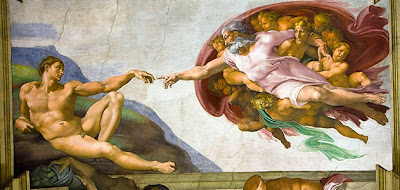The Renaissance began
well before AD 1500. Some say it’s roots
go back to political, philosophical and educational changes in 12th
century Europe. Most would agree that it
began to have a more noticeable effect on society after the fall of Constantinople
in 1453, when many Greek scholars fled the terrible destruction of that
last Christian metropolis and brought their knowledge, along with many ancient
texts, to the cities in Western Europe where they found refuge. This led to a rebirth (renaissance is a
French word meaning rebirth) in the arts and sciences of the late Middle Ages. Also rediscovered were many ancient books
preserved in monasteries during the barbarian invasion of Europe after the fall
of Rome in AD 476.
With the invention of the printing press in 1453,
these old books could now be reproduced in hundreds and even thousands of
copies, ensuring their survival for future generations and allowing them to be
read by multitudes in the present time.
In the thousand years since the Fall of Rome books had only been
preserved by the Church and they were read only by priests and very few lay
people. The number of books had been
limited because they were copied out slowly, by hand, in monasteries. As the 16th century began, a flood
of books poured out of printing presses and into the hands of Europeans.
By AD 1500, the Renaissance had also revived and
revitalized art forms throughout Europe. The Church commissioned some of the
greatest works of art during this time period. The Sistine Chapel in
Rome was erected in 1473-1481 by famous architect Giovanni del Dolci. Its interiors were decorated by some of the
great masters of the Renaissance: Perugino, Pinturicchio, Botticelli,
Ghirlandao. Michelangelo
painted the frescoes found on the ceiling for Pope Julius II (1503-1513). He painted the fresco known as “The Last
Judgement” on the west wall behind the altar for Pope Paul III
(1534-1549). Tapestries depicting events
from the Gospels were designed by Raphael and woven for Pope Leo X (1513-1521). .
Humanism was also born out of the
Renaissance. Humanism was an attitude, a
belief system, that exalted man’s free will and his superiority over
nature. These are ideas that can be
accepted by a Christian. But humanism
soon came to emphasize man’s personal quest for truth, as if the Truth was not
already known: that God had created man and Christ had redeemed him. Instead, humanism suggests that the truth is “out
there” to be found in certain studies, or religious or emotional experiences.
This proved to be a very dangerous new “attitude” and it
would wreak havoc on the unity of Christians as it continues to do today.

No comments:
Post a Comment